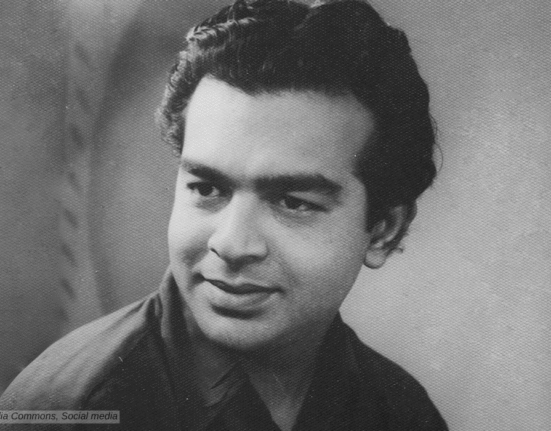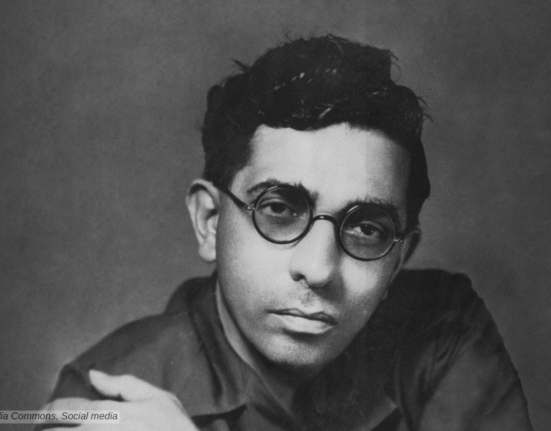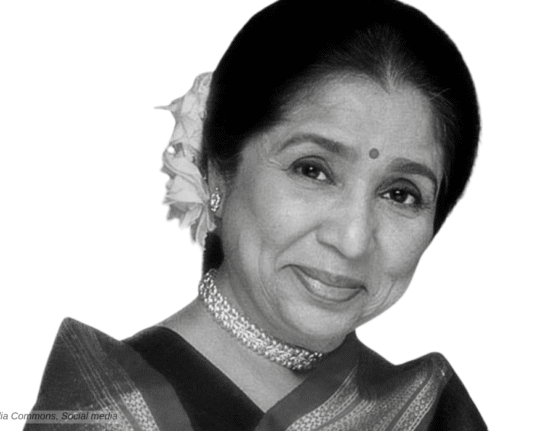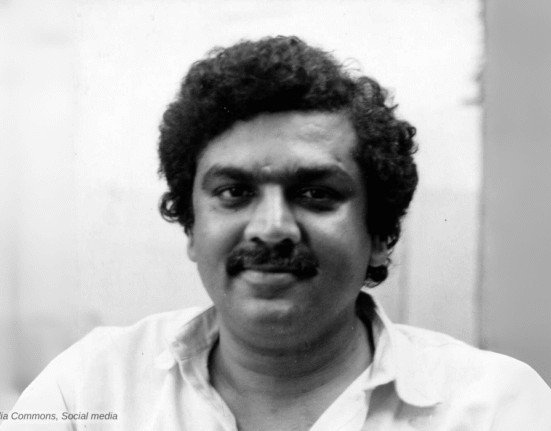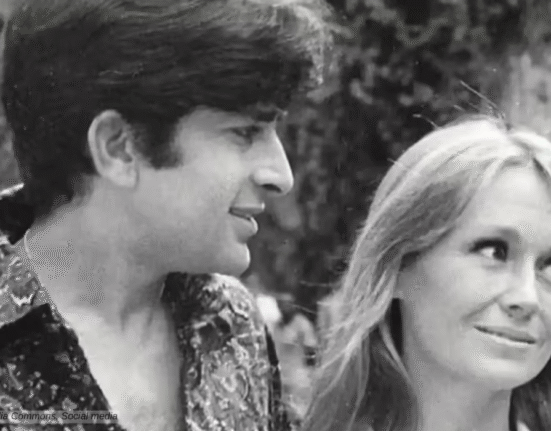Generally when a film became a cult classic or became a part of popular culture, all the people connected with it got famous, but some times, for some strange reason, it didn’t happen. Perhaps the biggest example of this phenomenon is “Nadiya Ke Par,” an iconic film that is the integral part of the Hindi film narrative from the past four decades, but hardly anyone knows the name of its director, Govind “Moonis.”
Govind Moonis, a short story, screenplay, and dialogue writer, lyricist, and director who wrote the unforgettable films “Ghar Ka chiragh,” “Rat aur Din,” “Dosti,” “Aasra,” and “Chalti ka Nam Gadi,” He also directed “Nadiya Ke Par,” “Babul,” and “Sasural.”
Early Life
Govind Moonis was born on January 2, 1929, in the village of Pasakhera, Unnao, Uttar Pradesh. His father’s name was Pandit Shriram Dwivedi. As a child, he developed an interest in literature, often reading Bengali publications. He completed his education in Kanpur and soon found his passion for writing. His first success as a writer came in 1947, when his short story was published in the print publication Dainik Veerbhara.
Moonis’ foray into films began when he met the Bengali director Ritwik Ghatak and assisted him on the film “Bedeni,” which he never completed, but this collaboration marked the beginning of Moonis’ illustrious career in cinema. He later worked with Ghatak again, penning the lyrics for the film Nagarik, which was released posthumously for Ghatak in 1977.
Govind Moonis in Films
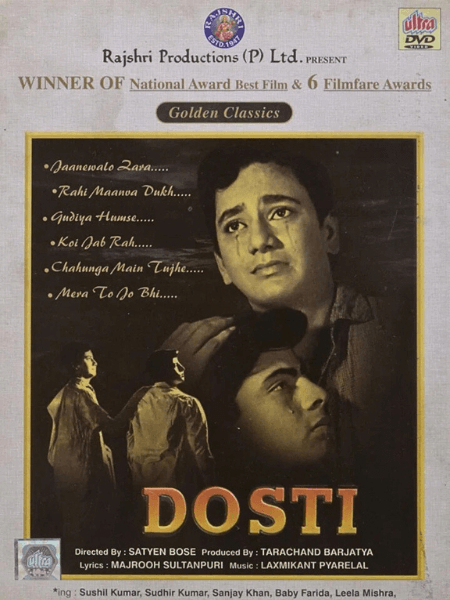
In 1953, Moonis moved to Bombay (now Mumbai), the heart of India’s film industry, where he assisted the renowned director Satyen Bose. Their first film together was the 1954 classic “Jagriti,” which was followed by Bandish (1955), starring Ashok Kumar, Meena Kumari, Daisy Irani.
He wrote dialogues of Chalti Ka Naam Gaadi (1958), a musical comedy directed by Satyen Bose. The film, starring the Ganguly brothers, revolves around a man who forbids his brothers from marrying due to his own romantic misunderstandings. Dosti (1964), also directed by Bose, showcased Govind’s dialogue-writing talent. The story of two disabled friends earned immense critical acclaim, and Govind won a Filmfare Award for Best Dialogue.
This partnership was fruitful, and Moonis worked with Bose on several projects like Aasra (1966), Aansoo Ban Gaye Phool (1969), Jeevan Mrityu (1971), and Saanch Ko Aanch Nahin (1974), cementing his reputation as a talented writer.
One of the most important films of their career was Nargis’s “Raat Aur Din (1966), which earned her the National Film Award for Best Actress. She played the role of Varuna, a married woman who has dissociative identity disorder. He also wrote the dialogue for “Ghar Ka Chirag (1967)” and “Uphaar (1971).” Moonis has also written for the Children’s Film Society’s “Anmol Tasveer.”
Nadiya Ke Par
Moonis’ directorial ventures were equally successful. He directed Nadiya Ke Paar (1982). The film was an adaptation of Keshav Prasad Mishra’s novel Kohbar Ki Shart. Filming took place in Jaunpur, Uttar Pradesh, capturing the essence of rural life. The production stayed true to the region’s culture, using local dialect and traditions. Nadiya Ke Paar tells the story of Chandan played by Sachin and Gunja, portrayed by Sadhana Singh. Inder Thakur played Omkar, Chandan’s brother. Mitali portrayed Roopa, Gunja’s sister.



Ravindra Jain’s music was the highlight of Nadiya Ke Paar. The soundtrack features folk-inspired songs like “Jogiji Dheere Dheere,” sung by Hemlata, Chandan Rikhiaram Sharma, Jaspal Singh, and Sushil Kumar, and “Jab Tak Pure Na Ho Phere,” by Hemlata. “Kaun Disha Mein Leke Chala Re” by Jaspal Singh and Hemlata captures the playful romance between Chandan and Gunja. “Ganga Maiya Ke Paniya” by Hemlata and Suresh Wadkar adds emotional depth. The songs, rooted in rural traditions, gained widespread popularity, contributing to the film’s success. The film’s immense popularity led to it being remade as Hum Aapke Hain Koun!, one of the highest-grossing Indian films.
Later Works
He went on to direct a few more films, like “Sasural (1984),” “Babul (1986),” “Bandhan Baahon Ka (1988),” and “Rimjhim Geeton Ki (1986).” His last film as a director was the Bhojpuri film “Ganga Jaisan Pawan Piritiya Hamar (2004),” starring Ravi Kishan and Sadhna Singh. In television, he wrote for Doordarshan’s Don, Zee TV’s Do Akele, and Star TV’s Ramleela, showcasing his versatility.
Govind Moonis passed away on May 5, 2010, due to complications related to throat cancer. He was 81 years old.
Govind Moonis on IMDB




